Lecture 24: Consensus 2
Reminder
Final Project: Short video due next Wednesday
- Not more than 10 minutes
- Simple presentation, audience = classmates
- Describe problem you solved
- Overview of solution method (sequential)
- Opportunities for parallelism
- Challenges and/or successes
- Don’t need final results!
- Simplest method: record in Zoom
Last Time
Introduced the consensus problem:
- $n$ processes, each with private input
- some processes may crash
- must produce output satisfying following properties
- Agreement: all processes output the same value
- Validity: if all systems have the same input, they all output that value
- Termination: all (non-faulty) processes decide on an output and terminate after a finite number of steps
Our Goal
Theorem (FLP, 1985). There is no algorithm that achieves consensus in the presence of even a single faulty process.
- Special case: there is no wait-free protocol for consensus for any $n > 1$
- wait-free is stronger assumption than termination
- Consider binary consensus all inputs 0/1
Roadmap
- Model
- atomic read/write registers
- Bivalent executions
- executions that can be extended to produce output 0 or 1
- Critical executions
- if any processor takes a step, then output is determined
- Proof of FLP result
Executions
An execution $E$ of algorithm $A$ specifies
- Inputs of all processes
- Sequence of steps taken by processes
- read
- write
- terminate
- crash
Executions may be incomplete
- Not all nodes have terminated/crashed yet
- encodes current state/history of execution
Executions may be extended by scheduling more steps
Example Algorithm
Default to 0: output 0 unless all processes have input 1
int in = getLocalInput();
int i = ThreadId.get();
write(i, in); // write my value to register i
if (in == 0) return 0;
for (int j = 0; j < nProcesses; j++) {
// wait until register j has been written
while (read(j) != 0 && read(j) != 1) { };
if (read(j) == 0) return 0;
}
// all processors have in == 1
return 1;
Example of Execution $E$
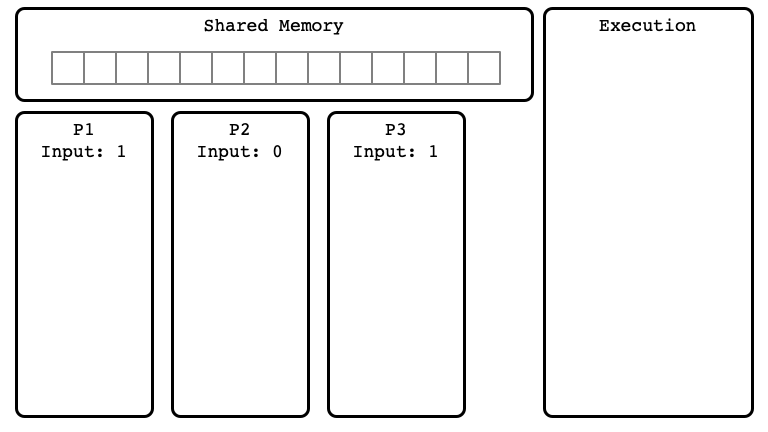
$E$ Step 01
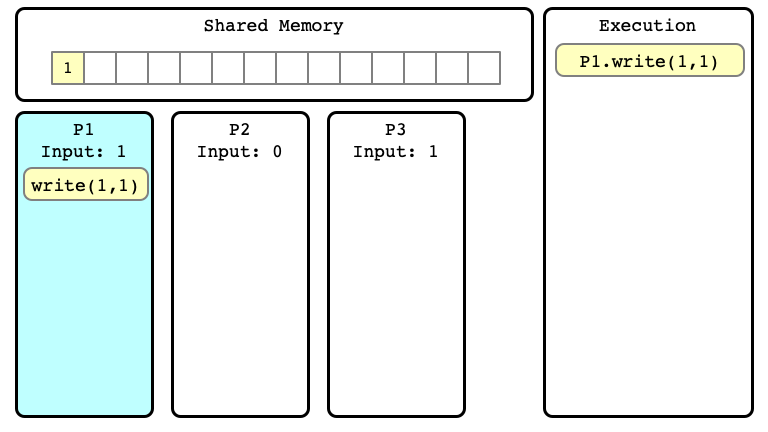
$E$ Step 02
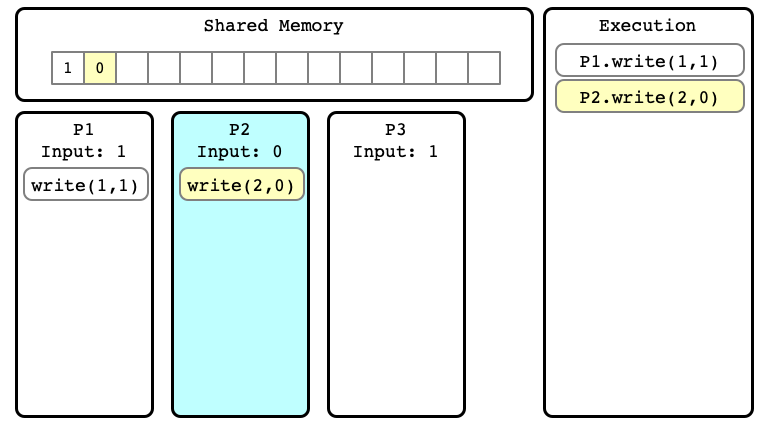
$E$ Step 03
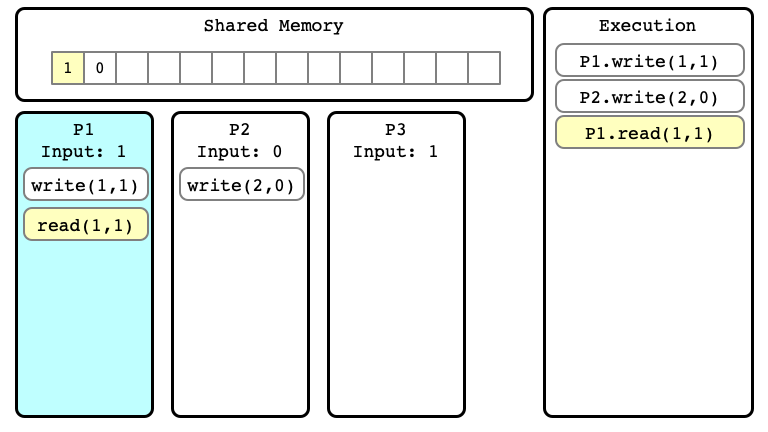
$E$ Step 04
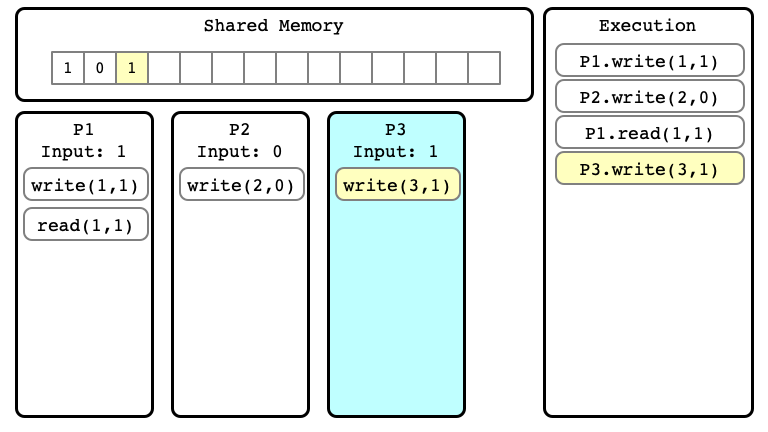
$E$ Step 05
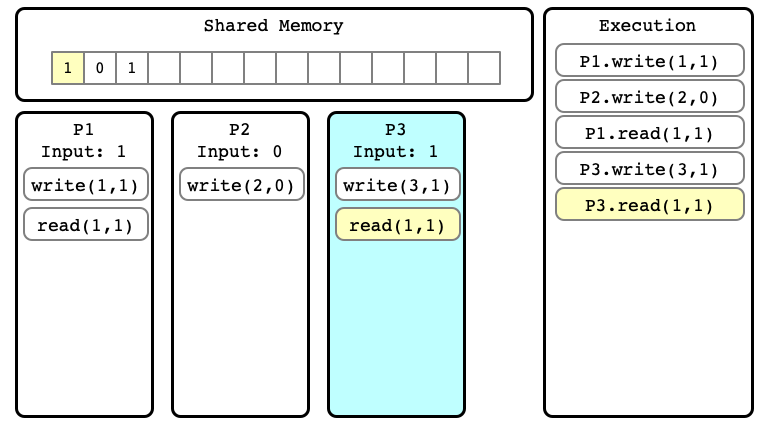
$E$ Step 06
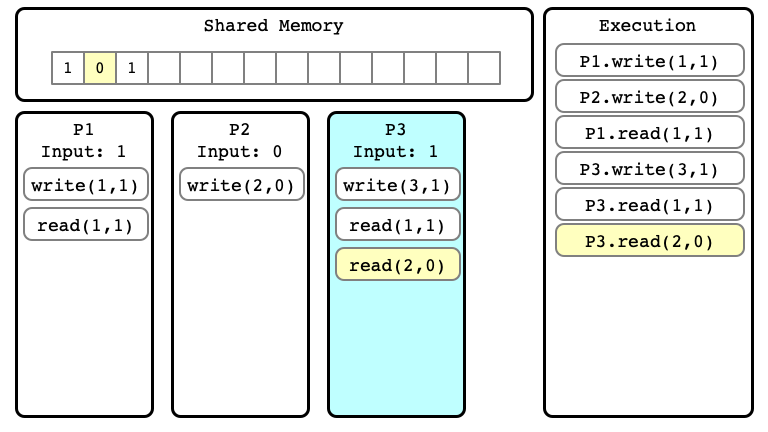
Extending Executions
In $E$, no process has terminated yet
- We can consider extensions of a given execution
- Start with $E$, and perform more steps
$E’$ Step 06

$E’$ Step 07
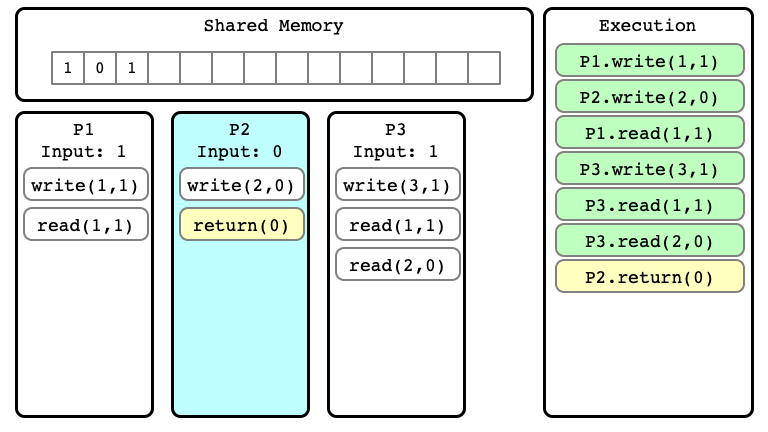
$E’$ Step 08
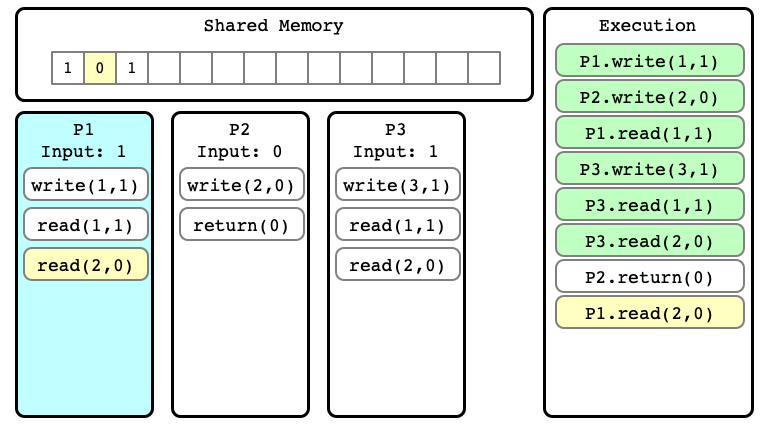
$E’$ Step 09
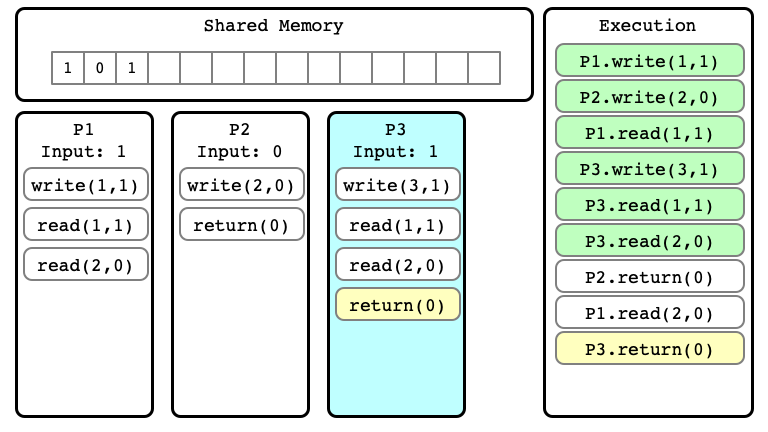
$E’$ Step 10
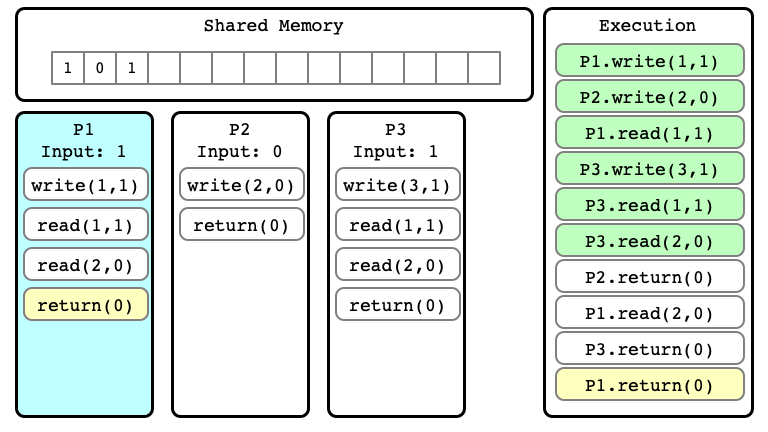
Note
We can consider many different extensions of $E$
Extension $E’$ of $E$

Alternate extension $E’’$
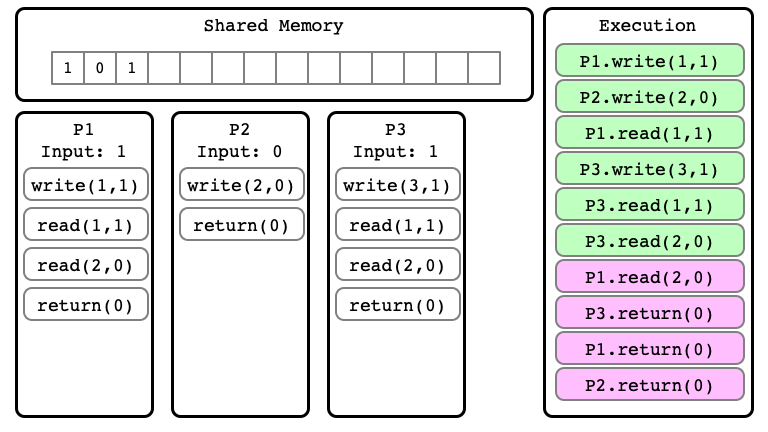
Indistinguishable Executions
- $E$ and $E’$ are executions
- they are indistinguishable at process $P_i$ if in $E$ and $E’$:
- $P_i$ has same input
- sequence of read/write operations performed by $P_i$ are same
- the sequence of values read and written by $P_i$ are the same
$E’$ for P1
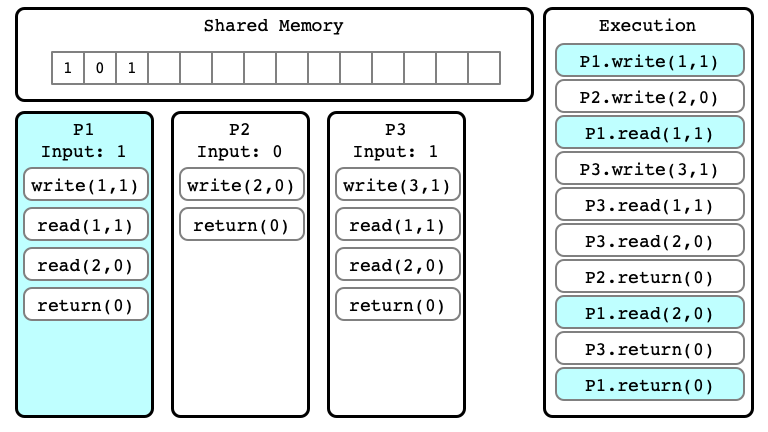
$E’’$ for P1
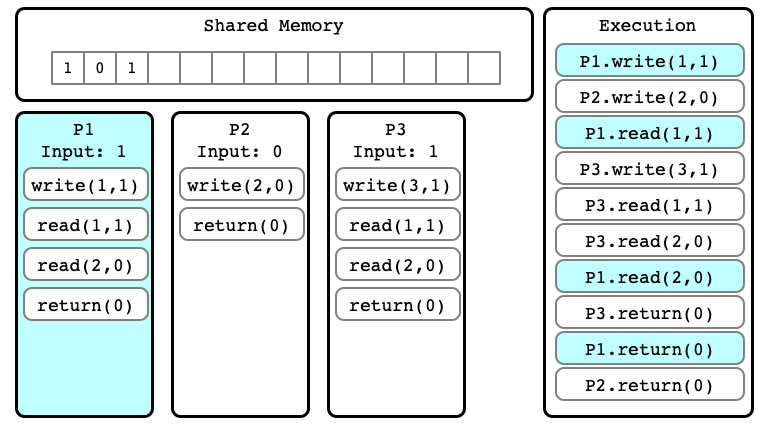
First Important Observation
Lemma 1. If executions $E$ and $E’$ are indistinguishable to process $P_i$ then:
- If $P_i$ has not yet terminated, then $P_i$’s next step will be the same in any extension
- If $P_i$ has terminated, then $P_i$’s output is the same in $E$ and $E’$
Properties of Consensus Protocols
Main argument for FLP:
- Describe properties that any hypothetical consensus protocol must have
- bivalent executions
- critical executions
- Use these properties to show that with only read/write registers there are indistinguishable executions that must give different outputs
- this contradicts Lemma 1
Bivalent Executions
- Consider a (hypothetical) wait-free consensus protocol $A$
- Let $E$ be an execution of $A$
We say that $E$ is…
- $0$-valent if in every extension of $E$, all processes output $0$
- $1$-valent if in every extension of $E$, all processes output $1$
- univalent if it is $0$- or $1$-valent
-
bivalent if there exist
- an extension $E’$ of $E$ in which all processes output $0$
- an extension $E’’$ of $E$ in which all processes output $1$
Second Important Observation
Lemma 2. Suppose $A$ solves consensus. Then there is a bivalent initial state.
- Here an initial state is an execution in which no process has yet taken a step
- the execution consists of only inputs for each process
Proof of Lemma 2
Must show: there is a bivalent initial state
Argument:
- by contradiction: suppose no bivalent initial state
- consider sequence of initial states
- show some are $0$-valent, some are $1$-valent
- show that some must be bivalent
$E_1$ is $0$-valent (Why?)
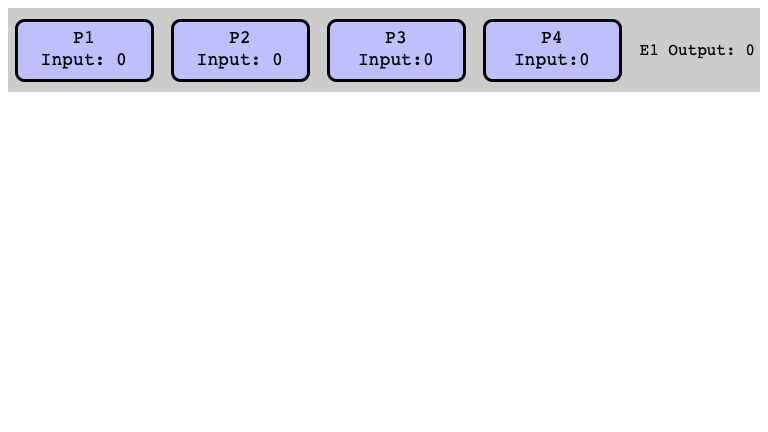
$E_5$ is $1$-valent
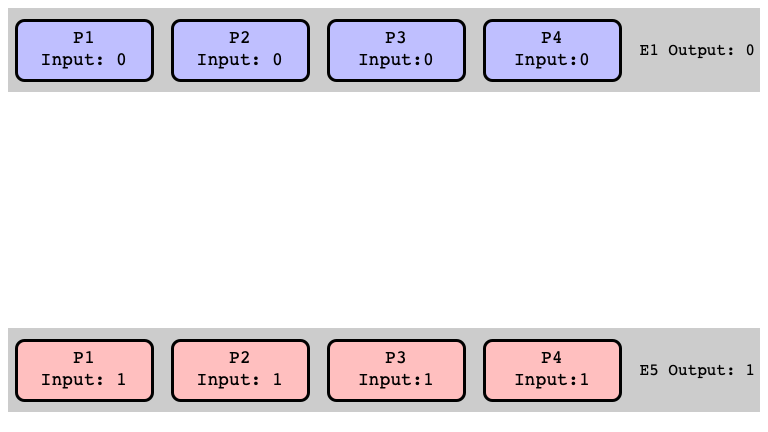
More Initial States
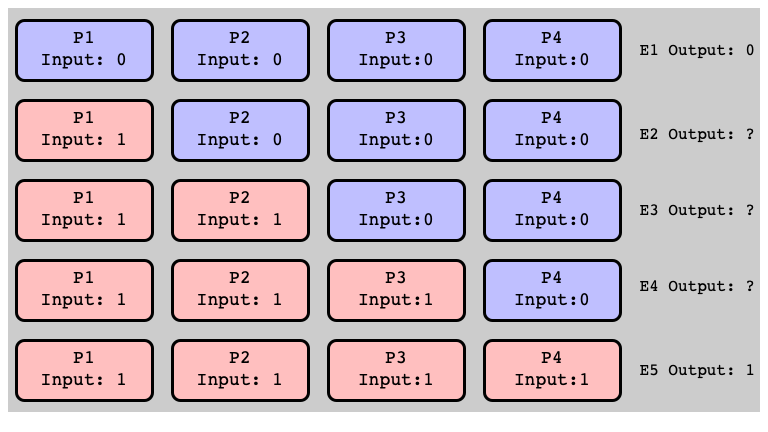
Assume: All Univalent
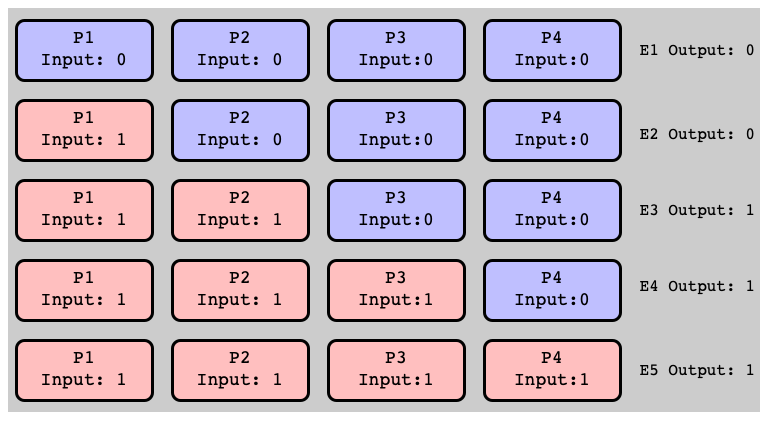
Adjacent Pair, Different Valency
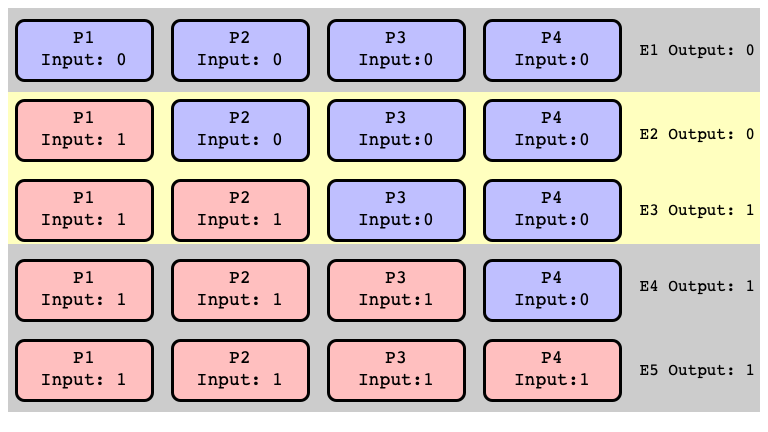
All Extensions of $E_2$ Return $0$
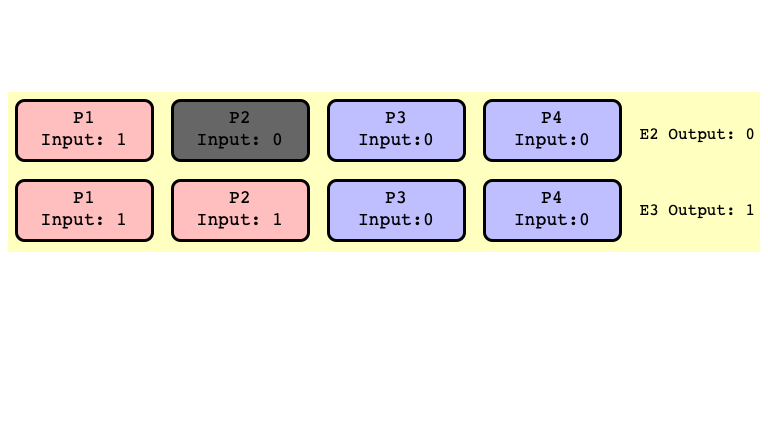
All Extensions of $E_3$ Return $1$
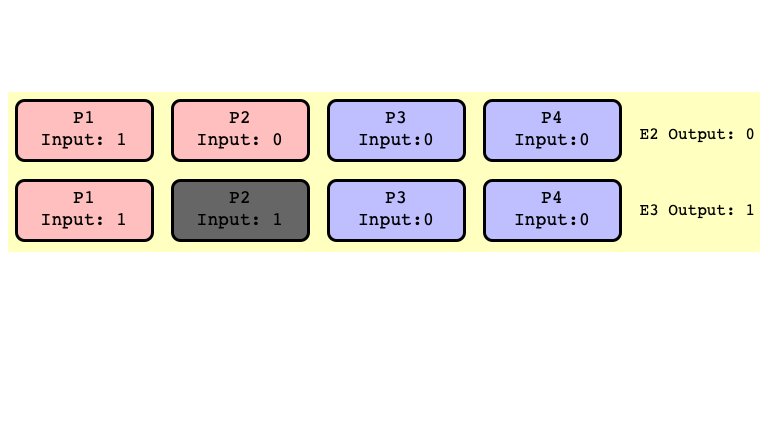
$E_2’$ and $E_3’$ Indistinguishable
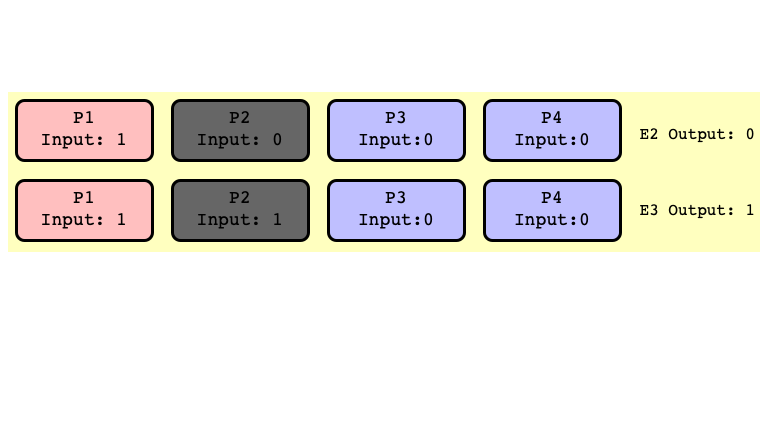
$E_2$ and $E_3$ Bivalent
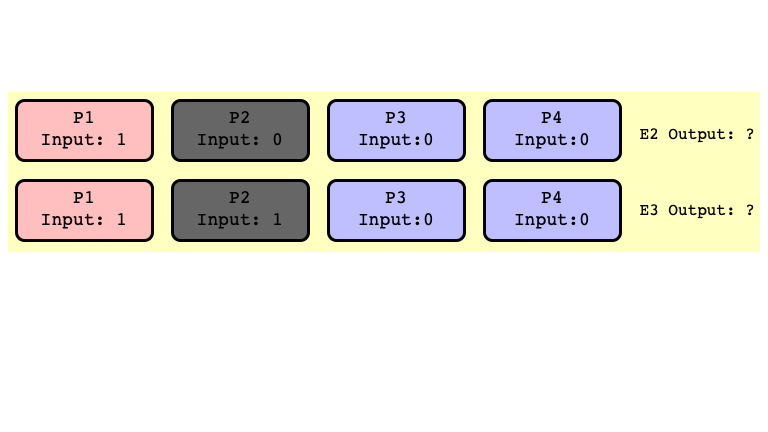
Note
Don’t need to assume $P_2$ crashes
- just assume first step of $P_2$ is scheduled after some other thread outputs
- this is possible because we assume $A$ is wait-free
- some process guaranteed to terminate even if one is not scheduled
Mere possibility of a crash together with wait-free assumption implies existence a bivalent initial state
- same holds if we require only termination with one fault
Critical Executions
An execution $E$ is critical if:
- $E$ is bivalent
- Extending $E$ by any single step of any process results in a univalent execution
Important Obvservation 3
Lemma 3. Every consensus protocol has a critical execution.
Proof of Lemma 3
Consider a bivalent initial state $E_0$
- Such a state exists by Lemma 2
- If $E_0$ is critical, we’re done
- Otherwise form $E_0, E_1, E_2, \ldots$ where
- each $E_{i+1}$ extends $E_i$ by single step
- each $E_i$ is bivalent
- By wait-freedom, the sequence must be finite
- So it has a final $E$ where every extension is univalent
- $E$ is critical!
Properties of Consensus
Lemma 2. Every consensus protocol has a bivalent initial state.
Lemma 3. Every consensus protocol has a citical execution $E$.
So far: Have not used any properties of atomic read/write registers
- These properties hold for all consensus protocols
- even if other atomic operations are supported